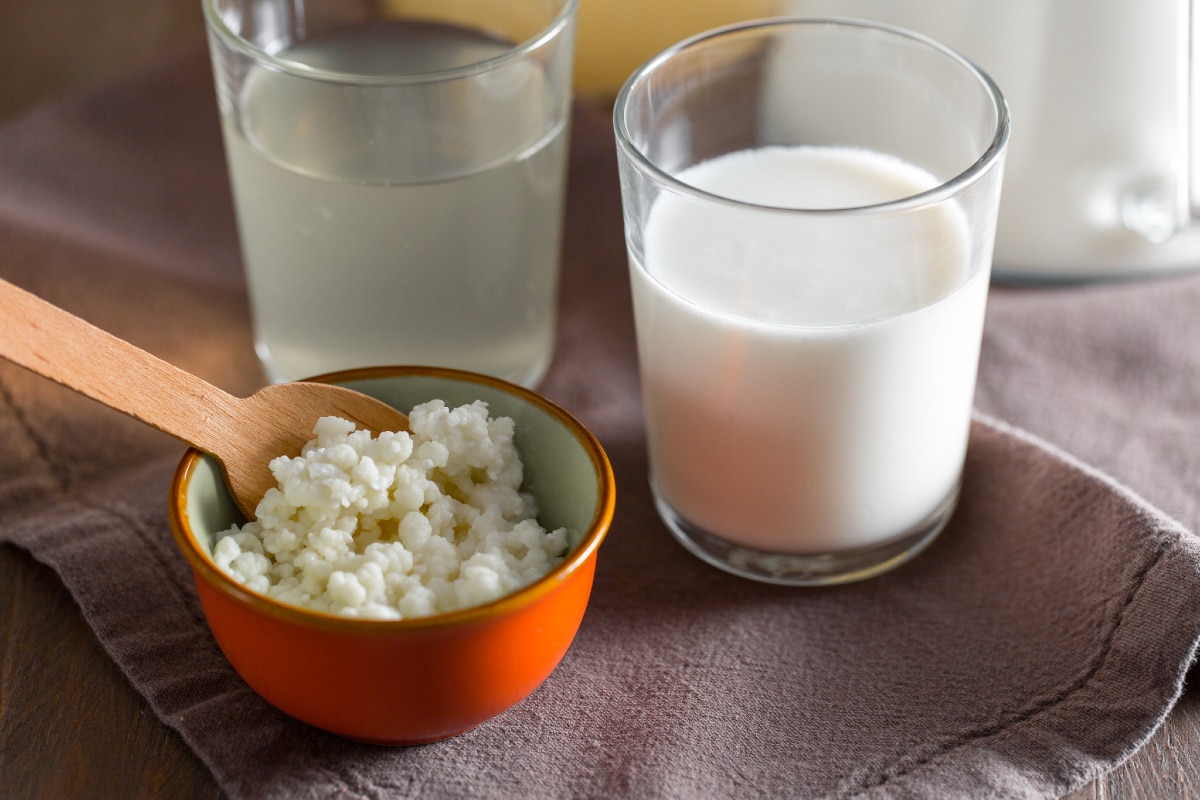Golden milk
- Very easy
- 15 min
- Kcal 58

The kefir is a nutritious drink similar to yogurt but more liquid. You can make kefir at home in two ways, as we will show you, starting from milk, chlorine-free water (mineral), or other plant-based drinks. To make this recipe, you will need to get some kefir grains; the best thing would be to ask a friend who already makes it at home, otherwise you can easily buy them. Water kefir, unlike milk kefir, has a sparkling, refreshing, and slightly alcoholic flavor. Generally, there are four values that can influence the taste of the final product: the time and temperature of fermentation, the added ingredients, and the quantity of grains used. Of course, there is no general rule; we propose the versions that convinced us the most, but you can customize them according to your tastes.
Besides drinking kefir, you can use it for many recipes in the kitchen!
Discover also:

To prepare milk kefir, open the sachet and strain the grains with a plastic sieve. Pour the room temperature milk into a jug 2 and add the grains 3.

Stir with a wooden spoon 4 and cover with a kitchen cloth. Secure the cloth to the jug with a rubber band 5 so it doesn't move, and let it ferment at a temperature of 64-86°F, in a place not exposed to sunlight. You can store the kefir in an oven with just the light on. The time can vary depending on the temperature: the higher it is, the less time it will take for the kefir to ferment. After 18 hours, you can check the consistency, and depending on the temperature, it might already be ready (if the temperature has been kept constant). After this time, filter the mixture into a bowl to separate the grains 6.

Stir the mixture well with a spoon 7; don't throw away the grains, but reuse them to prepare more kefir following the same procedure. It won't be necessary to wash them, but if you prefer, you can do so once a week with cold water. Then transfer your milk kefir into a jug 8, cover it and let it chill in the refrigerator for a couple of hours before enjoying 9.

For water kefir, pour room temperature water into a bowl. Add the brown sugar 10 and salt 11. Stir with a rubber whisk until completely dissolved 12.

Add the water kefir grains 13, the lemon slice, and the dates 14. Transfer to a carafe 15.

Cover with a kitchen cloth secured with a rubber band 16. Let it ferment at a temperature of 64-86°F for 24 hours away from sunlight. The time greatly depends on the temperature; the higher it is, the faster it will ferment. Taste the fermented water until you find the fermentation point you like best. After the fermentation time, filter the mixture 17. The fruit can be eaten, while the grains you have filtered can be used to prepare your water kefir again. The water kefir is ready to serve 18.